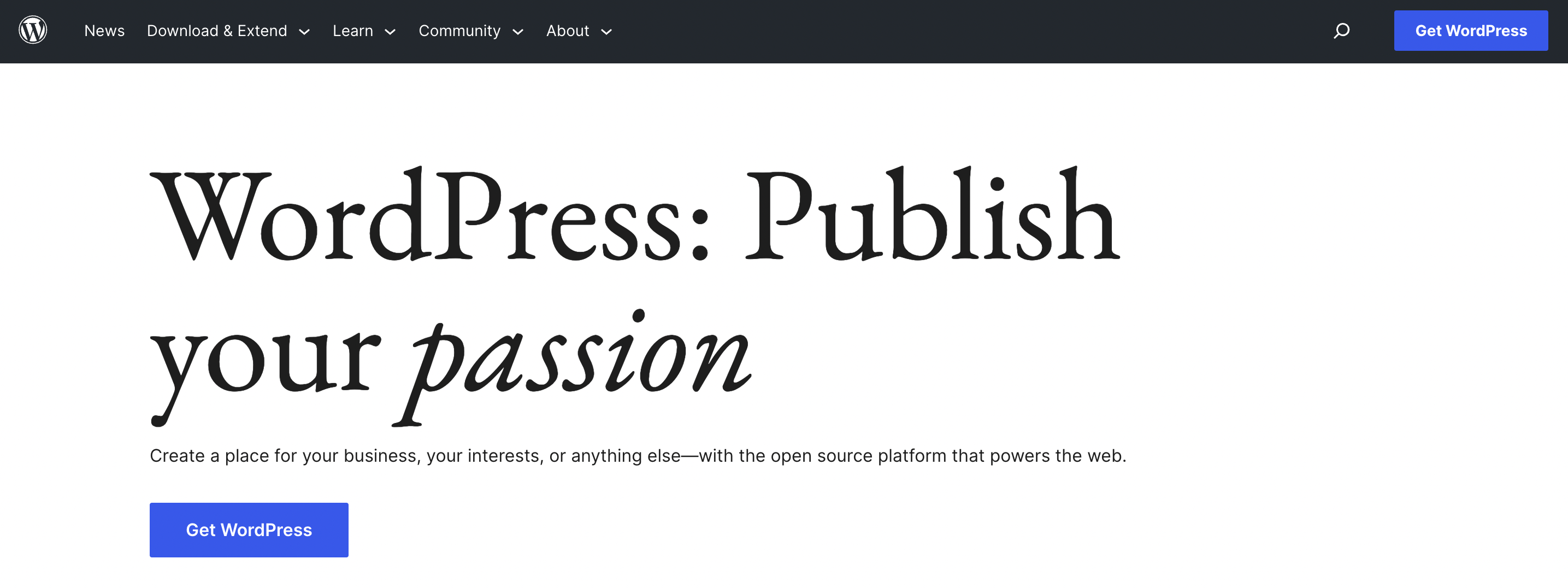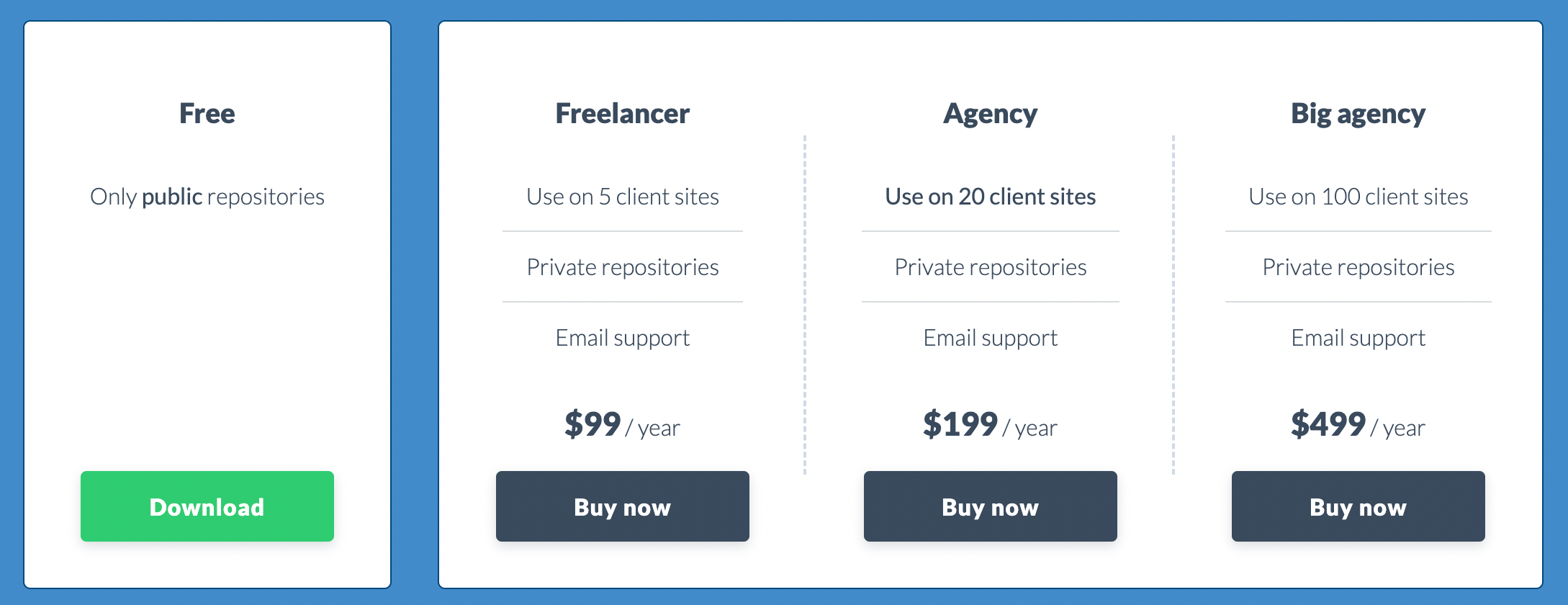GitHub & WordPress: How Are These Two Connected?
- What Is GitHub?
- What Is WordPress
- GitHub Vocabulary
- How Does GitHub Work?
- How to Use the WP Pusher Plugin?
- Does GitHub Have Alternative Uses?
- Conclusion
GitHub, WordPress: In this article, we will explore the dynamic synergy between two great tools GitHub and WordPress. We will uncover the transformative potential this integration holds for developers, designers, and WordPress enthusiasts alike.
What Is GitHub?
Although GitHub might appear overwhelming to new users, it is fundamentally straightforward. At its core, GitHub is a hosting service dedicated for developers, and it is available for free.
Its primary purpose is to host projects, enabling sharing and collaboration by making them accessible to other users. These users can download and contribute to a project.

GitHub is a web-based platform that serves as a central hub for version control and collaboration in software development. It allows developers to store, manage, and track changes to their source code. The platform is built on top of Git, a distributed version control system.
GitHub provides a range of features that facilitate collaboration and project management. Developers can create repositories to host their code and easily collaborate with others by sharing their work, suggesting changes, and reviewing code through pull requests.
It offers an issue-tracking system for reporting and addressing bugs, feature requests, and other project-related tasks.
One of the notable aspects of GitHub is its popularity within the open-source community. Many open-source projects are available on GitHub, making it a vibrant ecosystem for developers to contribute to existing projects or create new ones.
GitHub also supports social features, such as following projects, starring repositories, and engaging in discussions with other developers.
What is WordPress?

WordPress is a widely used open-source content management system (CMS) that allows users to create and manage websites, blogs, and online applications.
It provides a user-friendly interface and a range of customizable features, making it accessible to both beginners and experienced users.
WordPress offers a template-based system called themes, which allows users to choose from a variety of pre-designed layouts and designs for their websites. Users can customize these themes to match their branding and modify the appearance and functionality of their websites without requiring extensive coding knowledge.
One of the key strengths of WordPress is its plugin architecture. Users can extend the core functionality of WordPress by installing plugins. Plugins are additional software components that provide specific features and functionality to enhance websites.
There is a vast repository of plugins available, offering solutions for search engine optimization (SEO), e-commerce, contact forms, social media integration, and more.
WordPress also provides a robust content management system, allowing users to create and organize different types of content, such as pages, blog posts, media files, and more. It includes a built-in editor for creating and formatting content, and users can schedule posts for future publication. WordPress also supports user roles and permissions, enabling multiple contributors to collaborate on a website while maintaining control over access levels.
Community
WordPress has a large and active community of users, developers, and designers. Users can seek support through official documentation, forums, tutorials, and community-driven resources. Additionally, WordPress regularly releases updates to improve security, performance, and features.
While WordPress offers a hosted service at WordPress.com, it is commonly used as a self-hosted CMS. This means users can download the WordPress software from WordPress.org and install it on their own web servers, providing greater flexibility and control over the website.
Overall, WordPress has become a popular choice for individuals, businesses, and organizations looking to create and manage websites efficiently, whether it’s a simple blog or a complex e-commerce platform.
GitHub Vocabulary
What is a GitHub Repository?
A GitHub repository is a central location where code and related files for a project are stored and managed. It serves as a version-controlled directory that contains all the project’s files, documentation, and revision history.
In simpler terms, a repository on GitHub is a container that holds all the code and assets associated with a specific project.
What Is Git Version Control?
Version control enables a team of developers to collaborate on a project simultaneously while maintaining a record of all modifications made to each file over time.
Developers have the ability to commit a set of changes or revert to a previous version whenever issues arise. The system is also capable of handling conflicts that arise when two developers edit the same file.
Git, a widely adopted version control system, facilitates collaborative coding by allowing multiple users to work on the same codebase. GitHub, on the other hand, is a hosted service that employs Git for version control.

What Is a Local GitHub Pages Repository?
A local GitHub Pages repository refers to a copy of a GitHub Pages repository that is available on your local machine. It allows you to work on your website or project locally, making changes, testing, and previewing before pushing the updates to the remote GitHub repository. This local setup provides flexibility, speed, and an isolated environment for development and testing.
Working with a local Git repository allows you to make changes to the project’s files, track modifications, create new branches, and manage version control locally.
Git provides powerful features for collaboration, branching, merging, and reverting changes, enabling developers to work on projects efficiently and independently before pushing their changes to a remote repository, such as GitHub.
What Is a Local WordPress Environment?
A local WordPress environment is a self-contained setup on your local machine that enables you to run WordPress locally without the need for an internet connection. It typically involves installing a web server (such as Apache or Nginx), a database server (such as MySQL or MariaDB), and PHP on your computer.
This setup allows you to create, modify, and test a local WordPress site offline before deploying it to a live server. A local development site and local environments are commonly used for development, theme customization, plugin development, and testing.
How Does GitHub Work?
A repository refers to a project hosted on GitHub. GitHub allows anyone to create an account and invite other users to collaborate on their repository, facilitating joint development projects.
Users have the option to create a “fork” of the project, which essentially makes a copy of it on their own computer. They can then work on the forked project independently and propose their changes to be merged back into the main project. The project owner retains the authority to accept or reject these proposed changes.
Many WordPress developers utilize GitHub as a hosting platform for their plugins and themes. This choice enables them to collaborate with teams, receive feedback, and facilitate code reviews from others.
Furthermore, WordPress users can benefit from this usage of GitHub. They can download these plugins and themes from GitHub and apply them to their own websites, expanding the range of available options for customization and functionality.
How to Install WordPress Plugins and WordPress Themes from GitHub?
Obtaining and implementing WordPress plugins and themes from GitHub is a straightforward process. Simply download the respective ZIP file and proceed with a manual installation of the plugin.
If you find a particular plugin or theme on GitHub that you find valuable, don’t forget to “star” the project. By doing so, you can express your appreciation to the developers and indicate that you recognize their effort.
Simplify GitHub Theme and Plugin Deployments With WP Pusher Plugin
Streamlining the deployment of GitHub themes and plugins to your WordPress website is now easier than ever with the freemium WP Pusher plugin.
WP Pusher simplifies the process, allowing you to deploy themes and plugins from GitHub with the same level of ease as installing and updating from WordPress.org.
When it comes to deploying themes and plugins from public GitHub repositories, WP Pusher is absolutely free.
However, if you require deployment from private repositories, you’ll need to opt for one of the paid plans. These plans start at $99 and grant you the flexibility to deploy on up to five sites, all backed by a 30-day money-back guarantee.

If you are unsure about paying for WP Pusher you can test its capabilities at no cost. You can do this by deploying from a public repository. This way, you can experience its seamless functionality firsthand and then decide whether you’d like to invest in private repository support.
To help you get started, here is a quick guide on how to use WP Pusher for easy WordPress theme and plugin deployments. Let’s dive in and simplify your deployment process. Empowering you to effortlessly enhance your WordPress site with the power of GitHub.
Step 1: Install and set up the WP Pusher plugin
To get started, you’ll need to download and install the WP Pusher plugin on your desired WordPress site where you intend to deploy themes and/or plugins from GitHub.
Step 2: Establish a connection between WP Pusher and GitHub
After activating the plugin, navigate to WP Pusher → Settings → GitHub and click on the “Obtain a GitHub token” button to initiate the process of connecting WP Pusher to your GitHub account.
Authorize WP Pusher to access your GitHub repositories in the popup window. Then, follow these steps:
- Copy the token provided in the popup.
- Navigate to your WordPress dashboard and locate the designated field.
- Paste the copied token into the appropriate field.
- Finally, click the “Save GitHub token” button to save the token in your WordPress dashboard.
Step 3: Install WordPress theme or WordPress plugins.
Proceed to WP Pusher → Install Plugin or WP Pusher → Install Theme, depending on whether you intend to install a plugin or a theme. For now, we are installing a theme.
Once there, provide the following details:
- Theme repository: Enter the repository that houses the desired theme you wish to install.
- Repository branch: If you followed the preceding tutorial, you’ll likely enter “main” in this field.
- Push-to-Deploy: Check this box if you want the theme to be automatically updated with every code push. If left unchecked, manual deployment will be required.
- Link installed theme: Utilize this option if you want WP Pusher to take over an existing theme on your site.
Lastly, click the “Install theme” button to initiate the installation process.

The installed theme or plugin will now be visible in the regular theme or plugin sections of your WordPress dashboard.
In the future, updating an extension is as simple as updating any other plugin or theme from WordPress.org. Just navigate to WP Pusher → Plugins or WP Pusher → Themes, depending on the type of extension, and perform the update seamlessly.
What Alternative Uses Are There for GitHub?
GitHub extends beyond code hosting and serves as a significant social networking platform for developers and programmers.
On GitHub, users have the ability to follow each other, subscribe to project updates, and rate projects with stars. These features enable users to stay updated on projects of interest and maintain connections with colleagues and collaborators.
Moreover, GitHub proves valuable for collaborative writing projects where version control and collaboration are beneficial. It is commonly used for creating software manuals, documentation, learning resources, and various other writing endeavors.
Conclusion
In conclusion, GitHub has emerged as an indispensable tool for WordPress developers, offering a powerful platform for version control, collaboration, and project management.
With its seamless integration of Git, developers can easily track changes, manage code repositories, and facilitate teamwork.
The extensive ecosystem of plugins and themes hosted on GitHub adds tremendous value to the WordPress community, enabling developers to enhance their websites with custom functionalities and designs. Moreover, GitHub’s social networking features foster connections among developers, promoting knowledge sharing and collective growth.
Whether it’s for hosting plugins, collaborating on projects, or contributing to the open-source community, GitHub has become an essential companion for WordPress enthusiasts, empowering them to create exceptional digital experiences with ease and efficiency.
FAQ
GitHub plays a crucial role in WordPress development by providing a platform for various features. These features include version control, collaboration, and hosting of plugins and themes. It enables developers to track changes, manage code repositories, collaborate with others, and share their work with the WordPress community.
To download and install plugins or themes from GitHub, you can navigate to the project’s repository on GitHub. Click on the “Code” button, and select the “Download ZIP” option. Once downloaded, you can manually install the ZIP file via the WordPress admin panel. Go to “Plugins” or “Appearance” > “Themes” and choose the “Upload” option.
Yes, many WordPress plugins and themes hosted on GitHub are open-source projects, which means you can contribute to their development. You can fork the project, make changes to your forked version. Then create a pull request to propose your changes to the original project. The project owner can review and merge your contributions if they find them suitable.
No, GitHub is not limited to code-related projects in WordPress. It can be used for various purposes, such as collaborating on writing projects like software manuals, documentation, or learning resources. GitHub’s version control and collaboration features prove beneficial in managing and maintaining these non-code projects as well.
Even if you primarily interact with GitHub through its web interface, having Git installed on your computer provides additional flexibility and power. It allows you to work offline, leverage Git’s advanced version control features, and easily integrate with various Git-enabled tools and workflows.
